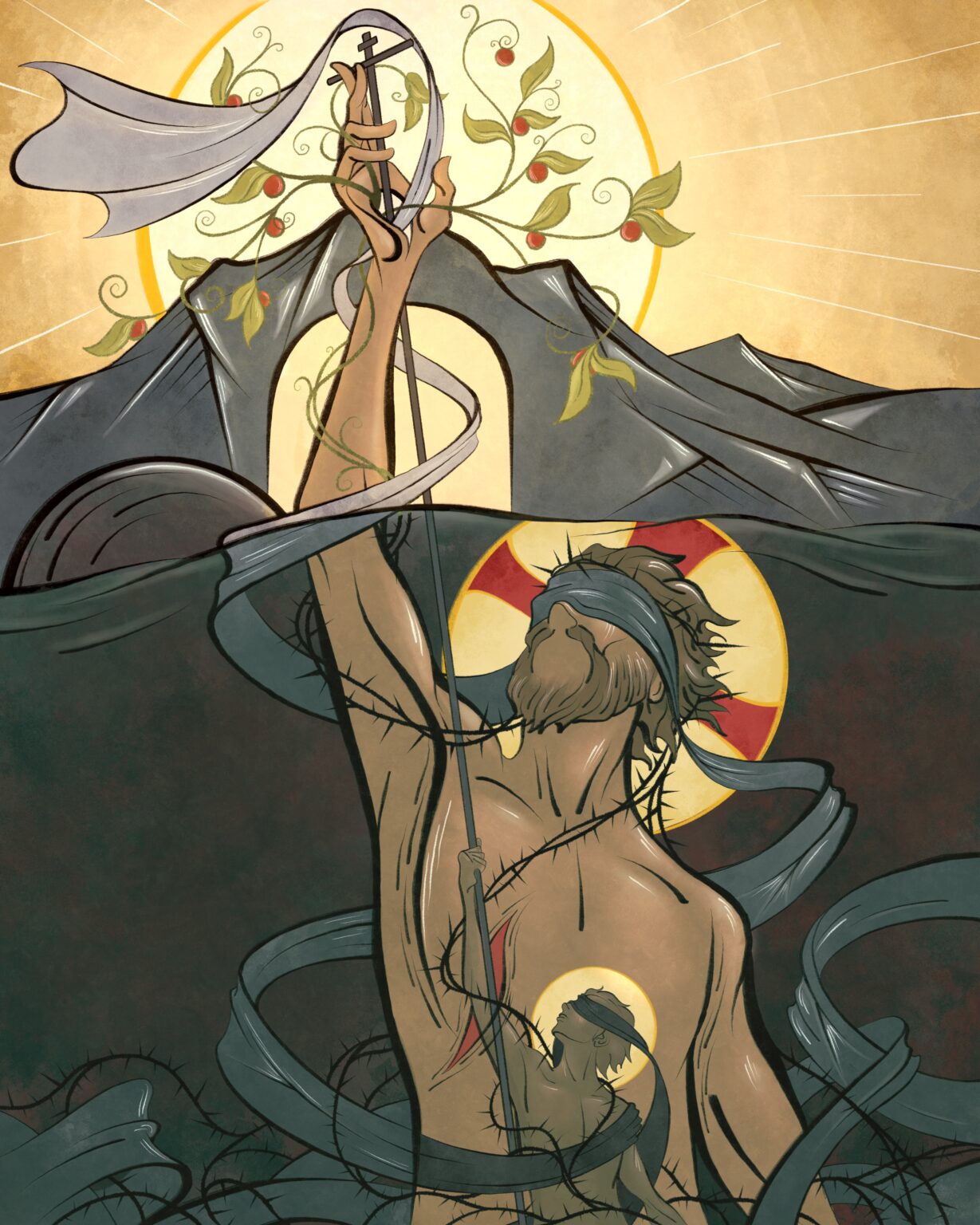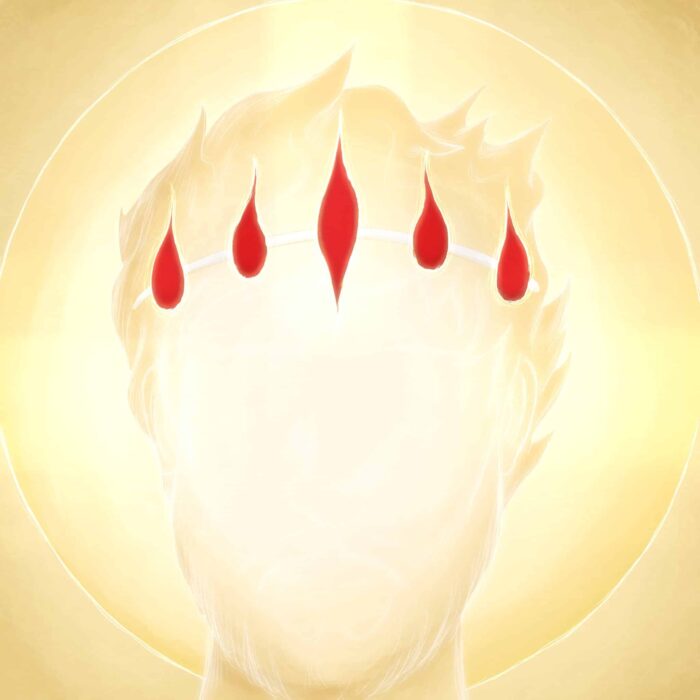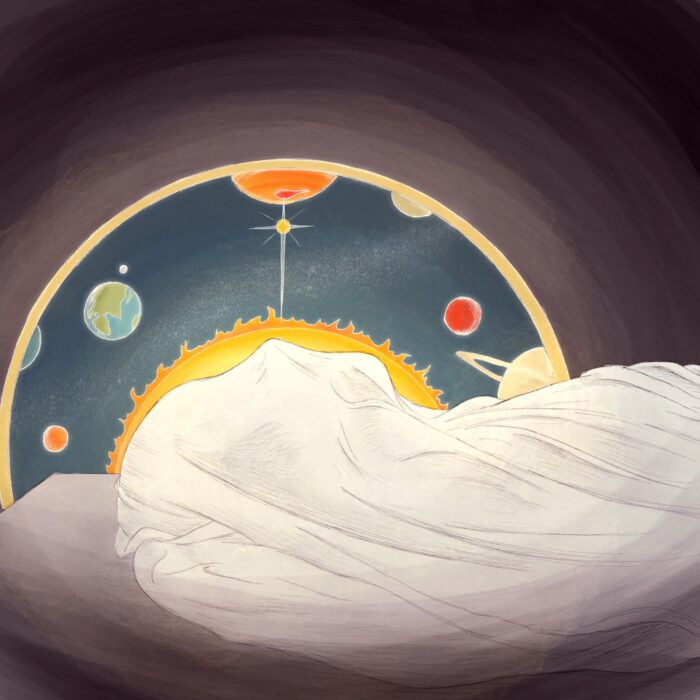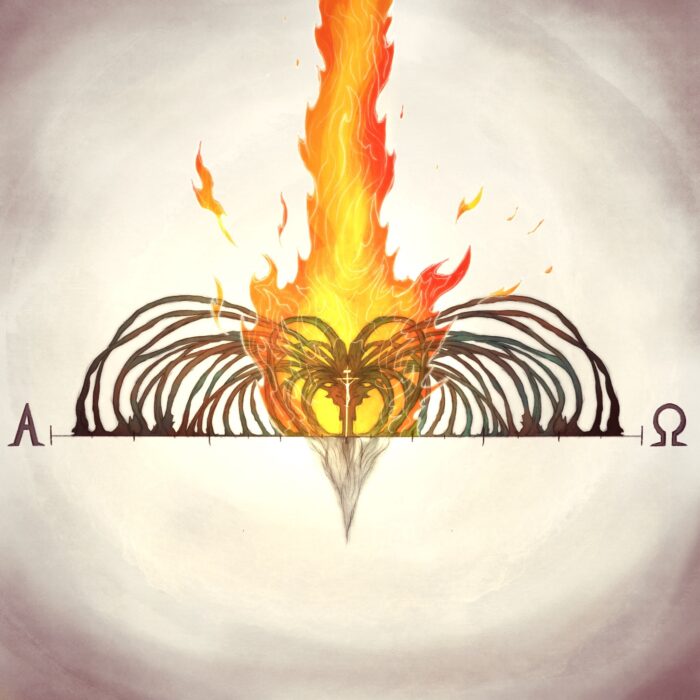Hebrews 11:19, ‘…[Abraham] considered that God was able to raise [Isaac] from the dead, from which, figuratively speaking, he did receive him back.’
See the place that resurrection plays in Abraham’s faith. In this passage, resurrection is the unexpected—yet necessary—conclusion that arises from the equation of God’s Promises + Death. The Genesis 22 command to slay the promised seed, from whom a nation was to come, is just one, concentrated instance of the confrontation between what God has *promised* (supremely, Life), and what we *experience* (supremely, Death). Faith perceives this tension and sides with God. It holds fast to His promises, believing that Life in Him will, indeed, be the end of the story, and so is driven to believe in resurrection. This dynamic was present from the very beginning, but it is decisively enfleshed in the person of Jesus Christ.
In the incarnate Son, the experience of faith itself is given personal, bodily, historical form…His literal death is simultaneously every death that faith faces…every descent into the dark, every shattering of hope, every doubt in the face of what is not and cannot be seen…the death of Jesus embodies and embraces every faith-death of His people….
And the literal resurrection of Jesus is simultaneously every resurrection for which faith hopes, the resurrection that is implicit in every act of faith, the resurrection that is trusted in every step that holds to the promise of YHWH in the face of perceptions to the contrary, the resurrection that presents itself as the only solution to the crucifixion of our faith upon the cross of our often curse-veiled experience.
His resurrection within history assures, embodies, secures—and, indeed, simply IS—every resurrection that faith assumes as it hangs in hope upon the tree of what is yet unseen, as it casts itself into the formless and void future, trusting that it will be brought—against all indications to the contrary—to the land of the Living and the home of the Lord (Ps 27:13). The resurrection of the crucified Jesus is the historically anchored assurance that this is, and will ever be, so.
Finally, I just want to preempt any confusion over this image by briefly addressing what is perhaps the most striking element in this image: namely, the blindfold covering Jesus’ eyes.
This is, admittedly, strange—our Lord is the incarnate Word of God and knows all things, why would He be represented with a blindfold? This depiction is an attempt to show that, in His genuine humanity, the faith that the man Jesus exercised in the Father was—like our own—faith without assurance of the future. We see this, for instance, when Jesus prays in Gethsemane (). Our Lord’s prayer in the Garden reveal that His experience of faith was—as our own—an entrusting of Himself to the Father despite His ‘blindness’ to the future (‘*if* this cup cannot pass…’ etc.).
This trusting the Father in the darkness of unknowing is the ‘death’ that Faith demands, even as the faithfulness of the Father to meet such Faith is the ‘resurrection’ that Faith anticipates. This is ever and always the dynamic of Faith, but it is decisively enacted within time and space, flesh and blood in the death and resurrection of Jesus.




